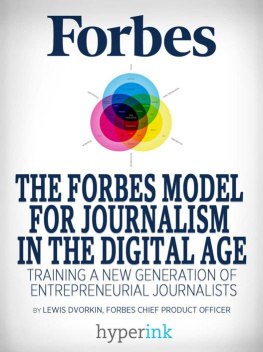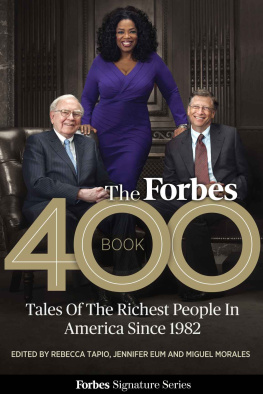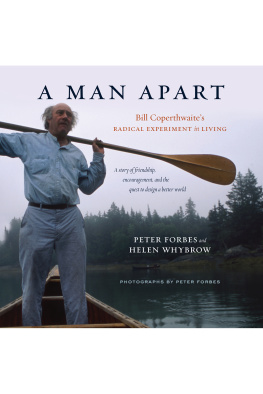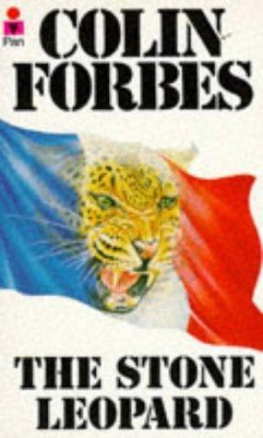The Forbes Model For Journalism
Introduction: Disrupting the Media Model for News and Information
I.
Introduction: Disrupting the Media Model for News and Information
Eight Points of Clarity
The media landscape is packed with grand old brands, many fighting to reinvent their identity. Some are chasing bright, shiny objects; new technology tricks abound. Some are trying to mimic a competitors ideas (its working for them, lets make it work for us, too). Still others are Cool Chasers, partygoers fawning over the sexy new voice of the Web or the It designer of the moment.
Everybody wants some cool. Who wouldnt want a little Miles Davis or Keith Richards in their lives? Actually, I think the Forbes message is kind of cool. As the world puts more hope and faith in the spunk and nimbleness of entrepreneurial dreamers, Forbes is backing them all the way, just as it always has. My colleague, Tom Post, phrased it well: Start with clarity, come up with cool, he said. If you dont, you end up with new but incoherent.
Eight points of clarity have driven our efforts to disrupt the media model for news.
1) Embrace The Content Continuum
At the core of social media, everyone is publishing and sharing content to form deeper relationships with people they know or to connect with those they would like to know. For Forbes , everyone means the three vital voices of the media business: journalists, the audience and marketers.
We give members of each group the opportunity to publish or certainly to openly participate and co-mingle in a credible business news environment. The key is transparency. Everyones role is clearly identified and labeled. To that end, weve supplemented our full-time staff of experienced reporters with a community of carefully selected qualified contributors (freelance journalists, authors, academics, topic experts and business leaders), each building an audience around their name and knowledge.
For readers and users, weve placed their comments into the natural flow of our Web site and magazine. Weve enabled marketers to say whats on their minds, too. Our evolving AdVoice platform gives them the same tools as our journalists and contributors to publish content on Forbes .com and the opportunity to do the same in print, in every case always prominently delineated. In the last two years, weve built a brand-building platform for journalists, participatory readers and marketers all under the Forbes umbrella brand and our mission.
2) Recognize theIndividual as a Brand: This trend actually began a century ago (William Randolph Hearst loved collecting celebrity journalists, including B.C. Forbes , our founder). In more modern times, national newspapers, broadcast television and cable turned many anchors (Walter Cronkite), reporters (Sam Donaldson) and columnists (Evans and Novak) into star brands. Each depended on a big media organization for distribution, marketing and so much more. The digital era and social media enable knowledgeable content creators to build audiences and followings on their own. Our full-time staffers now publish under their names, as do contributors, who remain independent operators. They all belong to a curated network of branded experts that naturally attracts other qualified writers who want to be part of a group that now totals 1,000.
) Build a Labor Model for the Times
The economics of the digital era demand new, more efficient staffing models. The key is a scalable structure that enables qualified voices to provide quality content and lots of it to meet the demands of voracious business news consumers.
- Weve built a hybrid model that includes full-time editors and reporters and nearly 1,000 experienced contributors across our eight key verticals, all of whom increasingly play the role of content creator, producer and programming manager using a new set of tools were putting in their hands.
- Weve focused on partnering with leading edge start-ups examples include DayLife , Visual Revenue , Narrative Science , Zemanta , Betaworks , Gesture Theory , Social Amp , Automattic , Athletics (a UI and design shop) and many others.
- Weve implemented The New Newsroom : a veteran staff of editors, hard-bitten reporters, tech-savvy digital journalists and our distributed workforce of qualified contributors. Without increasing the number of our salaried staff, weve added a producer desk to support our content creators and an audience development team to help market them across the digital worlds varied information ecosystems. They use our state-of-the-art publishing tools and data analytics to create, program and distribute high-quality content.
) Reimagine Products from the Inside Out
We didnt try to remake a W eb site or a magazine, for that matter all at once. The time it takes to redesign, deploy technology, rethink the workflow, analyze staff requirements, and then put it all together will make a product outdated immediately upon completion that is, if the weight of it all doesnt come crashing down on you first (did I ever learn that during eight years at AOL). So, we found our strategic center and built out from there, one code release after another, one magazine template after another.
In a multi-platform, multi-device world, our goal is a fluid branded Forbes experience with consistent and continuous engagement across all our products. The starting point was our signature list, The Forbes 400 . We built a scalable Web profile page that worked for each individual Rich List -er, combining real-time content, data and social connections (we later re-fashioned the page for companies, places, colleges and sports teams). The look and feel and functionality moved easily to the iPad. Simultaneously, we built a compatible multi-layered module-and-template system for Forbes400 profiles in print.
) Make Publishing and Programming Fast and Easy
The new economics of digital media necessitate the blurring of traditional roles and their functions. Todays content creators must be writers, editors, producers and both photo and video editors, often performing all those tasks for one piece of content. That requires easy-to-use publishing tools for Web, tablet and mobile production. The trick to that: dont build them all from scratch, but customize and streamline open source tools for the desired workflow.
We built tools that give journalists more creative freedom to program, curate and filter whats on their pages, lessening the role of content algorithms. We found that site editors needed flexible tools, too. We gave them the ability to mix and match content types (posts, photos, videos, comments, tweets, etc.) and to create experiences that engage consumers with variety and depth.
6) Evangelize aData Culture: In August 2010, we introduced Web screens with a public page-view counter Suddenly, everyone could see how many times a story had been viewed the audience, all our authors, their colleagues and their friends. At first, staffers and contributors were uncomfortable. It was upsetting for them to see when their posts didnt attract attention. Many lobbied for the counters to be removed. Ive felt for quite awhile that real-time feedback would help journalists better serve their readers. The data is to inform your journalism, not to rule it, I would say. Then something fascinating began to occur: when the counter wasnt working, publishing slowed to a trickle. The data feedback loop had become that important to our content creators. Today, the counter is working beautifully. Our staffers and contributors are building even bigger audiences. Each has an individualized real-time data dashboard.










